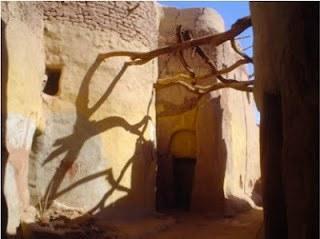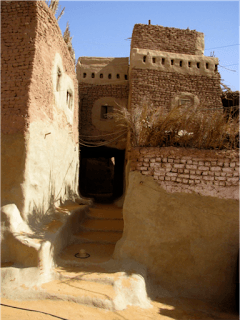Participatory action research as a tool in solving desert vernacular architecture problems in the Western Desert of Egypt
I would like to take you in a journey in a far desert spaces and places. A journey to know about dwellings of ordinary people in desert towns and villages. I need to tell you about inhabitants who think, design and build with the feeling that they are influencing the environment through the nature of their own homes. It is a journey about earth, mud, clay and local materials. In short it is about buildings we have come to call desert vernacular architecture.
The enthusiasm to work on my research started with an interest in vernacular architecture and a fascination with earth construction. As an architect it was always striking to learn how people designed and built vernacular settlements in the past without any technical education and how they produced spectacular complex architectural forms. Moreover their dwellings are still alive today and have managed to survive for centuries. The decision to study desert vernacular architecture in the Western Desert in Egypt was based on the personal belief that this strikingly vernacular work should be saved from the severe danger and acute risks it is now facing.
In the beginning of my work I was advised by senior colleagues not to tackle such problems in the Western Desert in Egypt. They claimed that I am swimming against the stream. I choose the little town of Balat as a location for my work application. During my four years working with Balat locals, I came to understand that Balat is a place that in addition to farming has harbored many traditional crafts for hundreds of years, including traditions of carpentry, blacksmithing, oil pressing, mud plastering, mud casting and pottery making. Inhabitants who lived harsh and ascetic lives were working and continue to work and build within ancient traditions that personified discipline, persistence, and insistence on perfection. I learned a great deal from these people during my work. I baked, cooked, plastered, cast mud brick and shared with them many social activities as well.
Along the periphery of the compact urban fabric of this little town of Balat there are contrasts and extremes. You feel there is another world with different patterns of identity and spirit, a world of modernity and buildings made of steel and cement instead of traditional materials. People who have built that new world within the vernacular one have created a contrast in which there are fundamental differences between vernacular and contemporary systems of building. Although the modern concrete built environment is to a large extent brutal to vernacular environments, it contains elements of human ambitions towards a dream for a better future that should be considered when using a vernacular approach. Desert vernacular settlements are a precious past that must be conserved and retained. However, I believe that understanding the past vernacular practice is also a tool for improving the present and future. This belief is the driving force that has kept me working with my research.
I cannot deny that my project has encountered some problems along the way and has sometimes been a tiring process due to lack of accurate maps and at other times lack of documentation. Travelling long distances and staying for long periods in the desert seemed at times to be torture, but now looking back I perceive it as an enjoyable learning experience and a rare chance to get in touch with myself.
I look forward to continuing this discussion with you! Please feel free to offer comment or question. FREE access to this article for the next 30 days is available through this link.
Marwa Dabaieh


